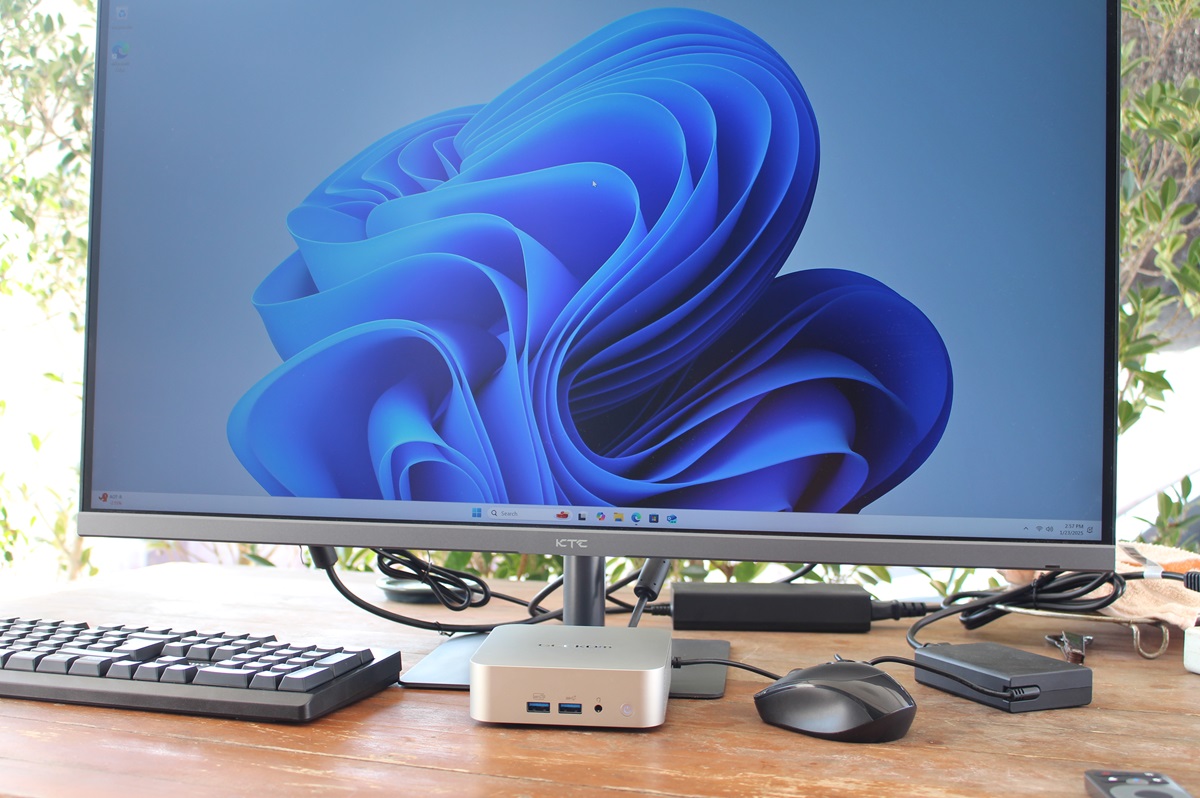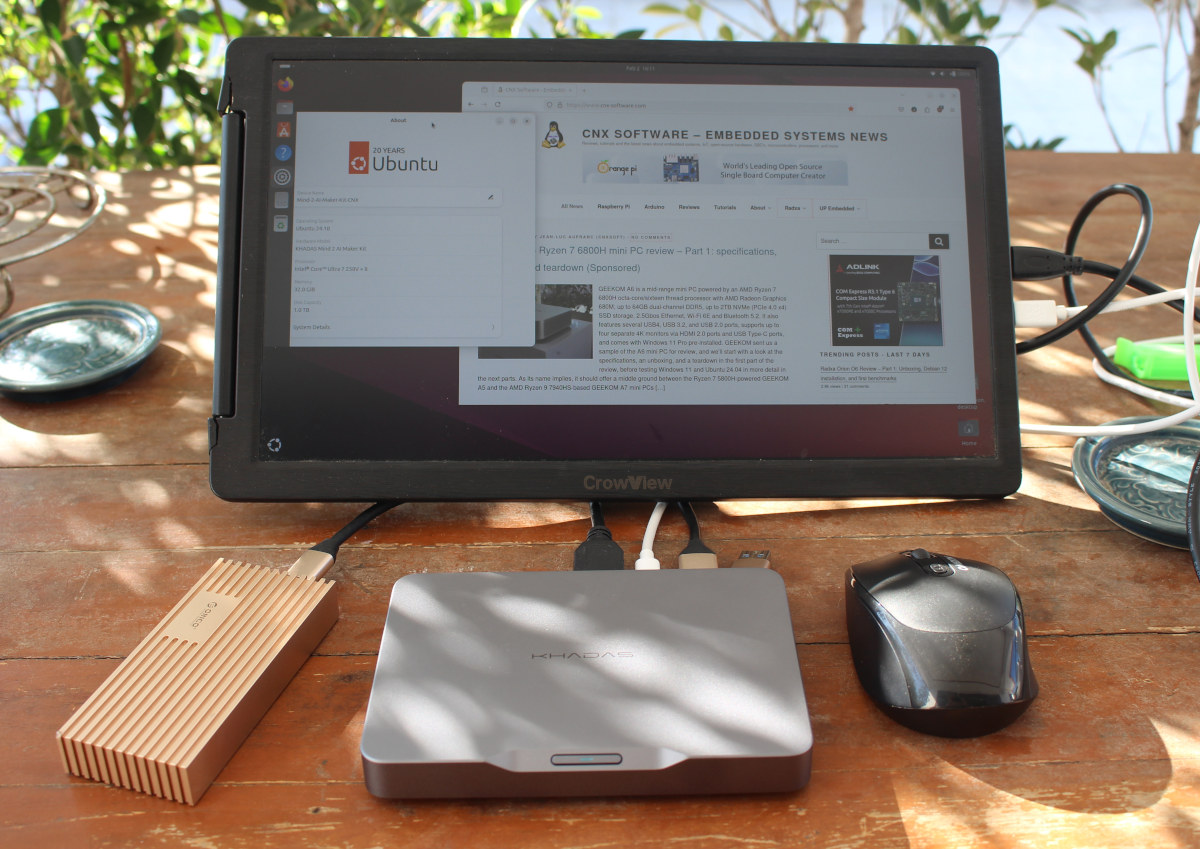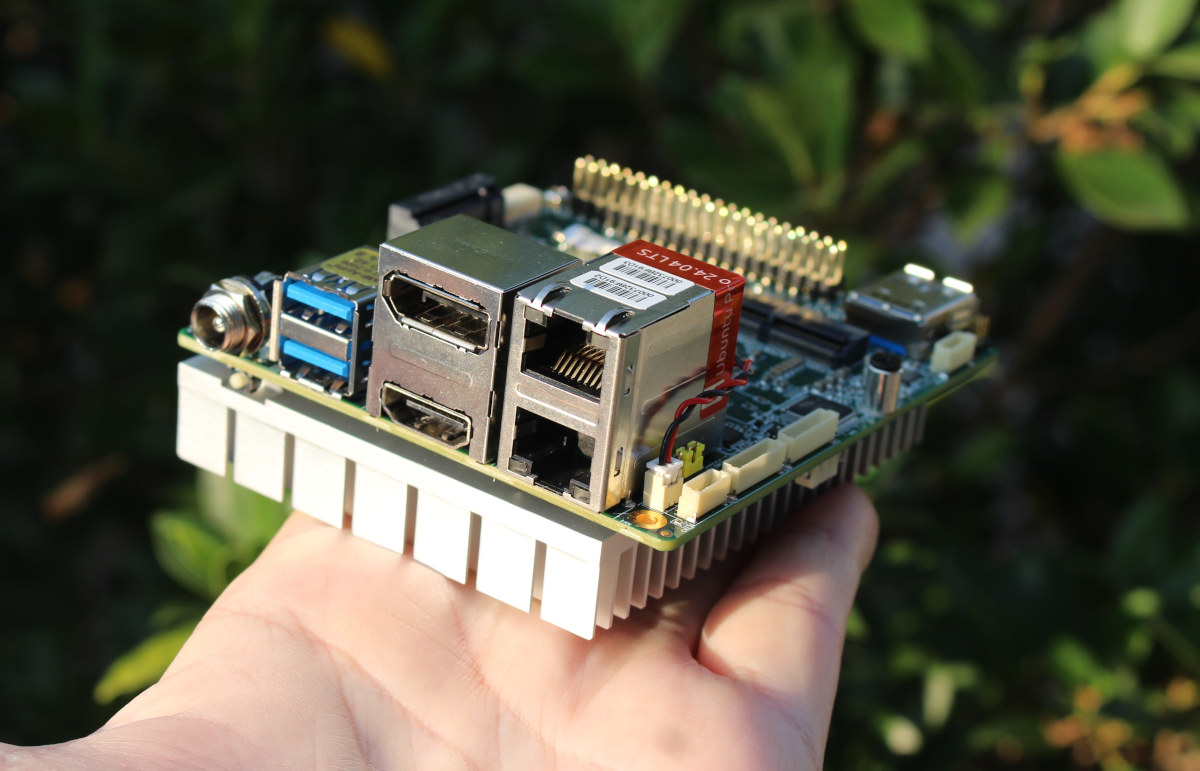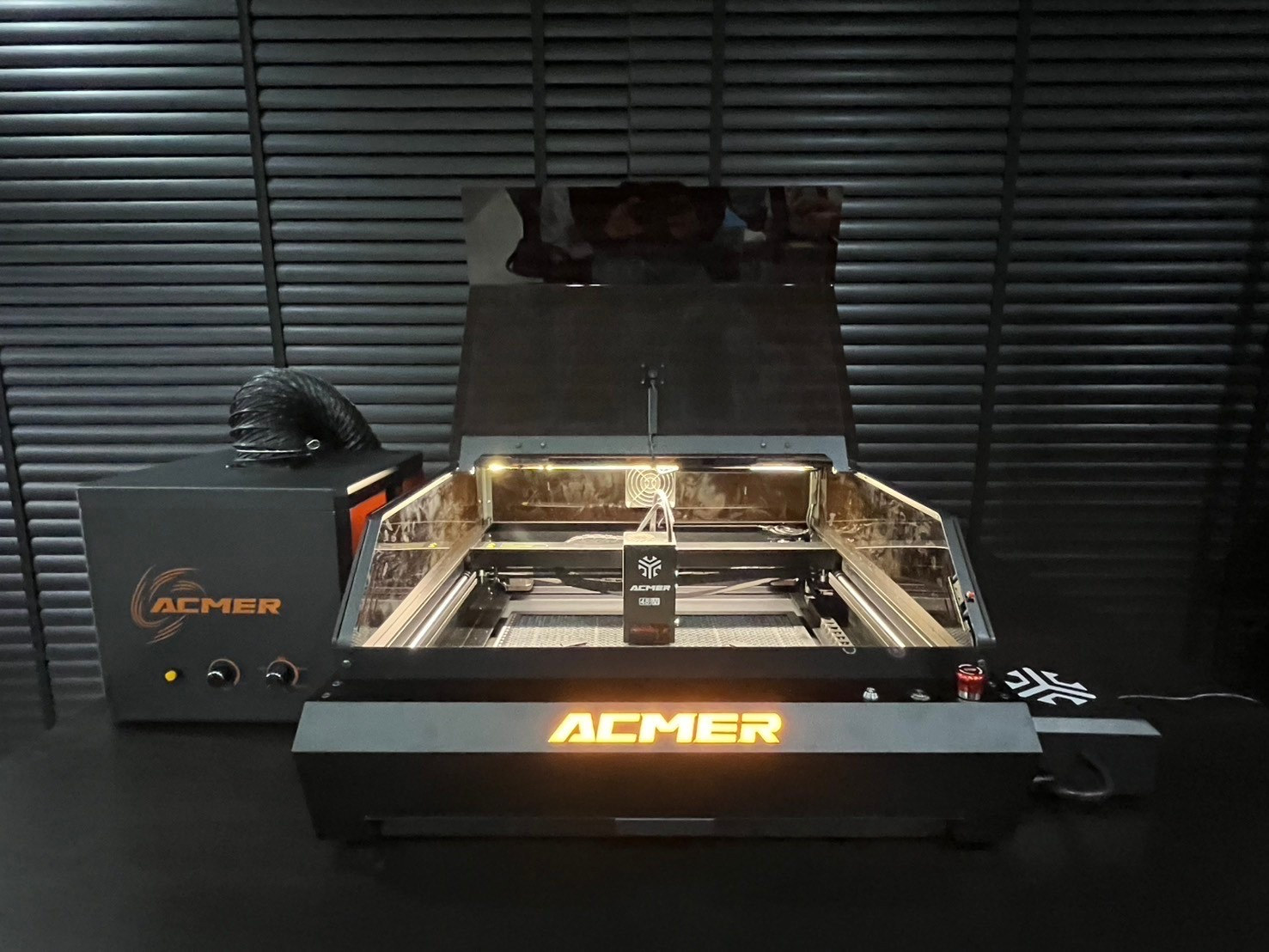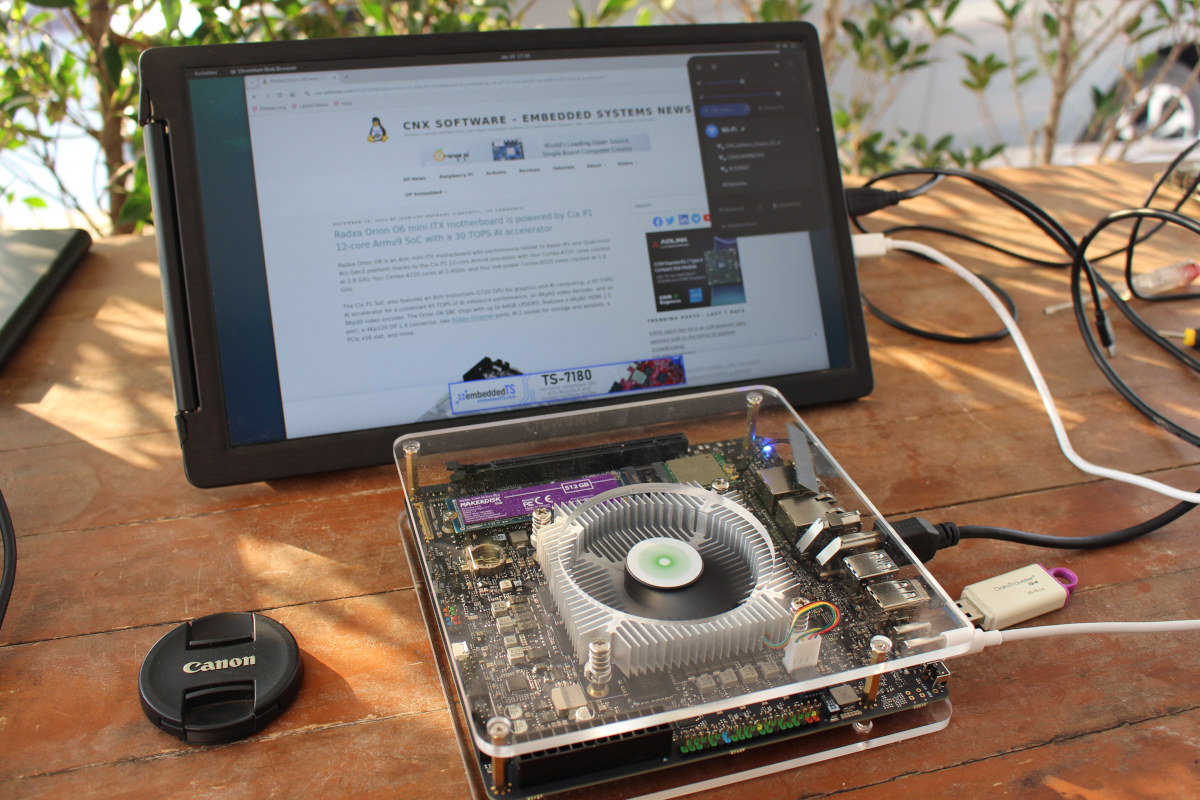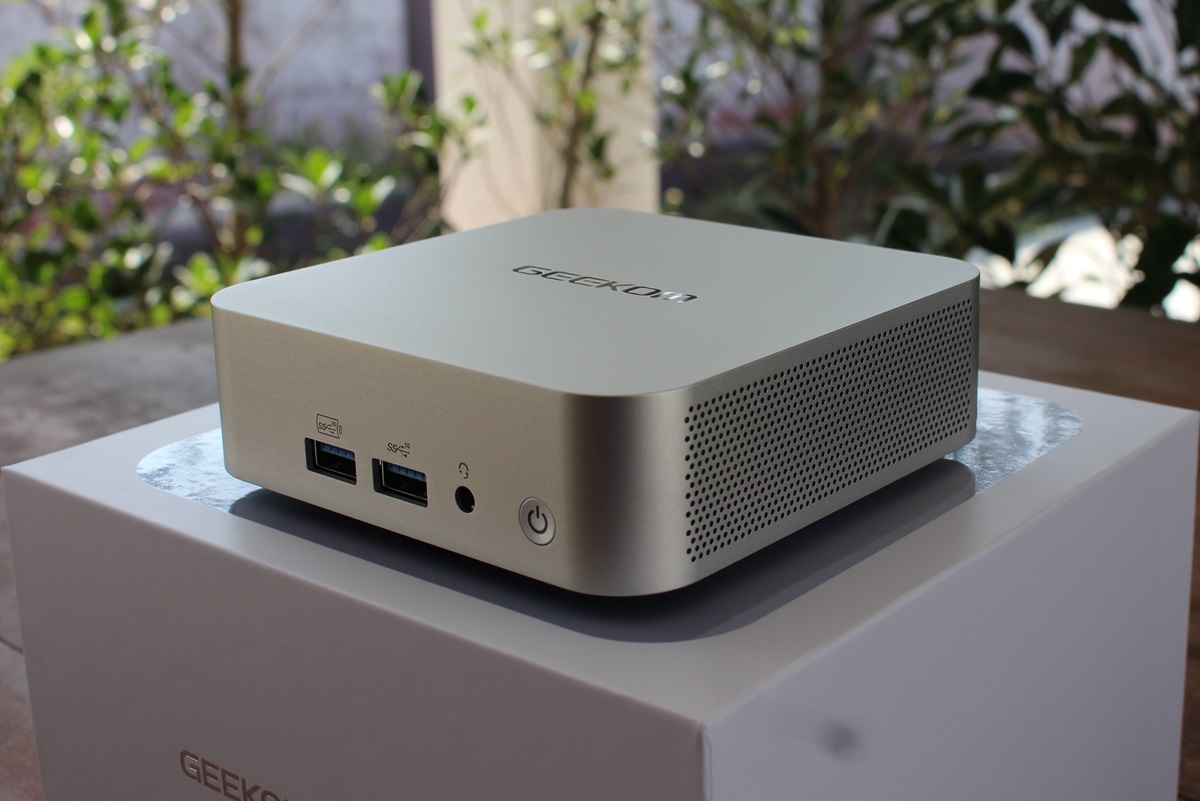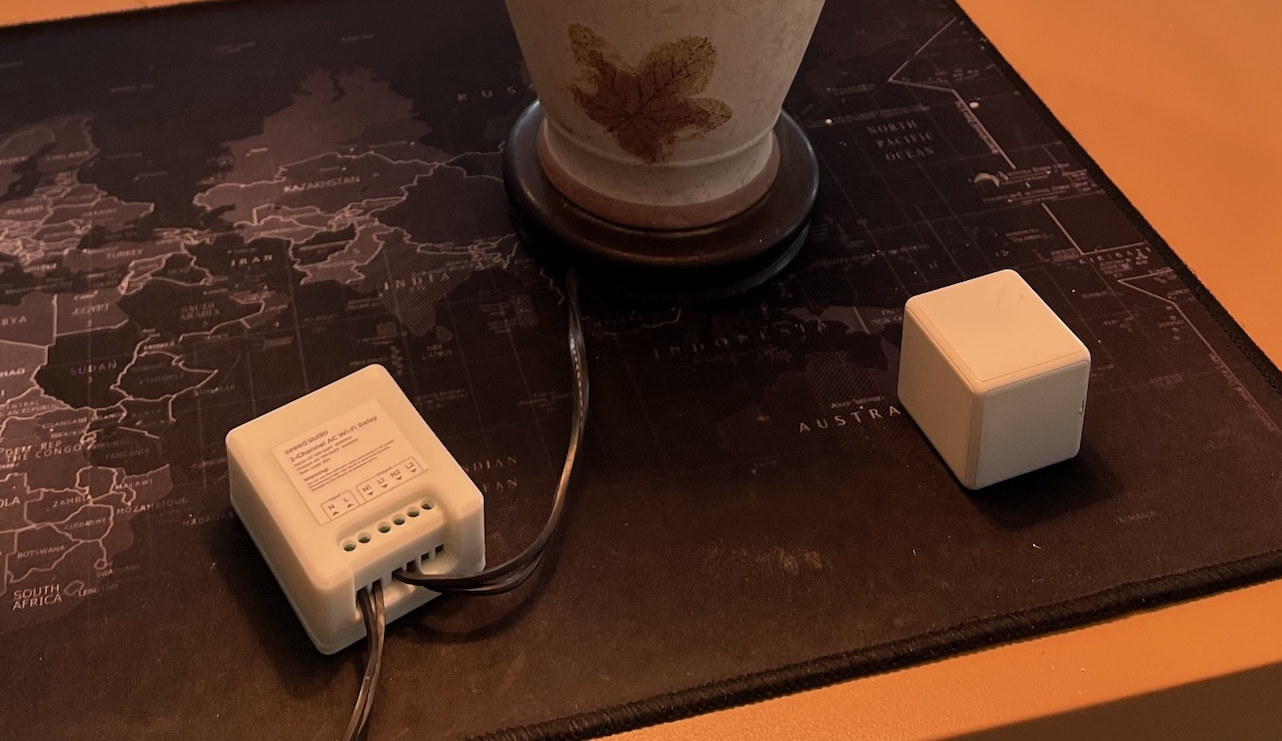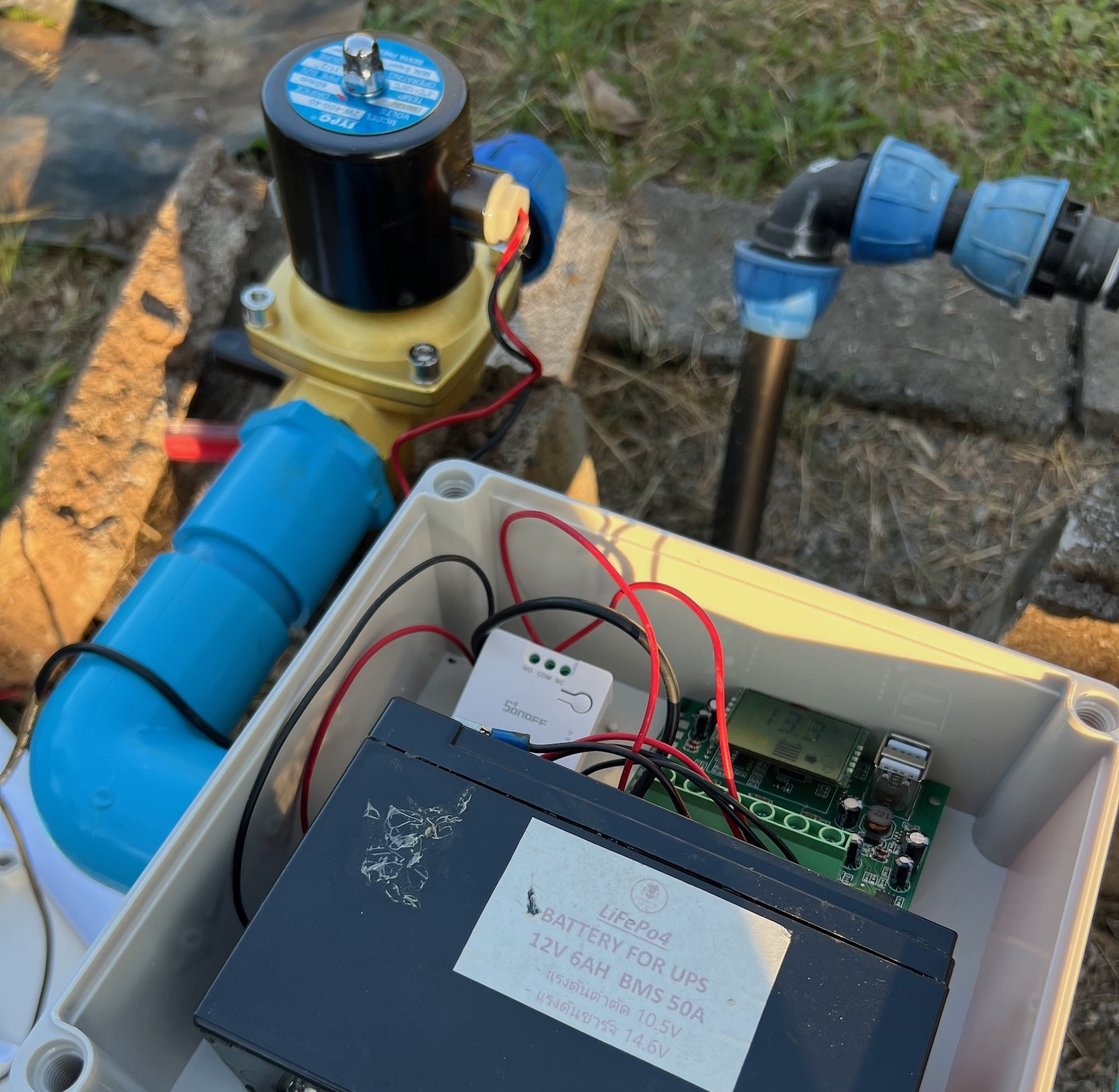In the first part of the review, we’ve already checked out the specs, gone through an unboxing and a teardown of the GEEKOM A6 mini PC powered by an AMD Ryzen 7 6800H CPU with up to 32GB DDR5 and a 1TB SSD, before quickly booting the preinstalled Windows 11 Pro. We’ve now had time to test the GEEKOM A6 in detail, so we’ll report our experience with the Ryzen 7 6800H mini PC with Windows 11 Pro. We’ve tested the features, ran benchmarks, evaluated storage and networking performance, stress-tested the device to see how it performs under load, and measured fan noise and power consumption. We’ll also compare it to the previous GEEKOM A5 and A7 mini PCs. [Update: The sponsored tag was added temporarily, as GEEKOM paid for the review to be pinned at the top of the website for one week] Software Overview and Feature Testing Going […]
Khadas Mind 2 AI Maker Kit Review – Part 3: Ubuntu 24.10 and the importance of power limits
I’ve already reviewed the Khadas Mind 2 AI Maker Kit with Windows 11 Home, and today, I’ll report my experience with Linux on the Intel Core Ultra 7 258V mini PC using Ubuntu 24.10 operating system. I would usually review systems with Ubuntu 24.04 LTS OS, but considering the Intel Core Ultra 7 258V SoC is so new, I installed Ubuntu 24.10 when I tested whether disabling VT-d (IOMMU) would improve Intel Arc GPU performance (it does to some extent), and it turns out it was a good decision because Ubuntu 24.04 requires lots of fixes and workarounds to work the Khadas Mind 2 AI Maker Kit, at least until Ubuntu 24.04.2 is released later this month with a more recent kernel. Khadas Mind 2 AI Maker Kit – Ubuntu 24.10 system information My Ubuntu 24.10 installed has both Linux 6.11 (default) and Linux 6.13 kernels, but I did most […]
UP Squared 7100 fanless SBC Review – Part 1: Unboxing and first boot to Ubuntu Pro 24.04
AAEON sent me a sample of the UP Squared 7100 fanless industrial SBC for review. The board is powered by an Intel N97 or N100 Alder Lake-N SoC (Amston Lake processors will be offered soon), and is equipped with up to 16GB LPDDR5 RAM and 128GB eMMC flash, plus two M.2 sockets for wireless and storage expansion. You’ll find the full specifications in our earlier article. I’ll start the review with an unboxing to check out the hardware, before booting it to Ubuntu Pro 24.04 LTS to check out some basic system information. In a few weeks, I’ll report my experience after in-depth testing in Ubuntu in the second part of the review which will include features testing from gigabit Ethernet to GPIO, some benchmarks, and power consumption measurements. UP Squared 7100 unboxing I received the UP Squared 7100 board in a retail package that reads “Are you UP for […]
ACMER P3 48W laser engraver review with ACMER AP220 Smoke Air Purifier, LightBurn software, MKSLaser app
Today, we’ll review the ACMER P3 48W laser engraver suitable for engraving and cutting various materials such as wood, acrylic, leather, and coated thin metals. It has a fully enclosed design protecting against laser light and reducing smoke in the room for better safety. The laser engraver also supports air filtration through the ACMER AP220 air purifier which we received for review as part of a full kit. Additionally, the P3 48W comes with a built-in camera for precise work positioning and previewing before engraving or cutting begins. Other safety features include automatic operation shutdown when the machine cover is opened. Users can import files through USB, Wi-Fi, or SD card, and the machine is compatible with popular software like LightBurn and LaserGRBL, as well as the ACMER mobile app, making it easier to use with file formats such as PNG, JPG, SVG, and DXF. ACMER P3 48W laser engraver […]
Radxa Orion O6 Review – Part 1: Unboxing, Debian 12 installation, and first benchmarks
Radxa sent me a sample of the Orion O6 mini-ITX motherboard for review. The system is powered by an CIX P1 (CD8180) 12-core Armv9 processor, equipped with 16GB RAM, and offers features like 5GbE, HDMI and DisplayPort, a PCIe Gen4 x16 slot, and more. It’s one of the most anticipated boards of the first part of 2025 since it’s powerful, offers a good performance/value ratio, and eventually promises to boot any ISO Arm64 image through an open-source BIOS / EDKII bootloader. I’ll start this review with an unboxing, NVMe SSD and WiFi module installation, and a short tutorial showing how to install Debian 12 operating systems before getting some system information and running a few benchmarks. In a few weeks, I’ll publish a more detailed review with features testing and more benchmarks to see what works and what doesn’t at this very early stage. Radxa Orion O6 unboxing I received […]
GEEKOM A6 Ryzen 7 6800H mini PC review – Part 1: specifications, unboxing, and teardown
GEEKOM A6 is a mid-range mini PC powered by an AMD Ryzen 7 6800H octa-core/sixteen thread processor with AMD Radeon Graphics 680M, up to 64GB dual-channel DDR5, up to 2TB NVMe (PCIe 4.0 x4) SSD storage, 2.5Gbos Ethernet, Wi-Fi 6E and Bluetooth 5.2. It also features several USB4, USB 3.2, and USB 2.0 ports, supports up to four separate 4K monitors via HDMI 2.0 ports and USB Type-C ports, and comes with Windows 11 Pro pre-installed. GEEKOM sent us a sample of the A6 mini PC for review, and we’ll start with a look at the specifications, an unboxing, and a teardown in the first part of the review, before testing Windows 11 and Ubuntu 24.04 in more detail in the next parts. As its name implies, it should offer a middle ground between the Ryzen 7 5800H-powered GEEKOM A5 and the AMD Ryzen 9 7940HS-based GEEKOM A7 mini PCs […]
Seeed Studio 2-Channel Wi-Fi AC Relay Review – An ESPHome smart switch with power meter function
We have received the Seeed Studio 2-Channel Wi-Fi AC Relay for review. It is an IoT/Smart Home device featuring a 2-channel relay (wet contact) that operates over a WiFi network, and provides an alternative to SONOFF Smart switches like the SONOFF R2 Dual. The Seeed Studio device is a bit larger and instead of relying on eWelink firmware, it natively supports Home Assistant since it’s pre-installed with ESPHome open-source firmware. Alternatively, if you prefer standalone deployment (without Home Assistant), you can manage it via the web browser. In addition to the basic relay function to control the AC-powered appliances, it also acts as a power meter. This is a good ready-to-use option for Home Assistant enthusiasts who prefer not to assemble their own components. Some practical applications include controlling electrical appliances such as lighting. Let’s dive into the details. Seeed Studio 2-channel AC Wi-Fi Relay unboxing The package we received […]
SONOFF MINI-D Review – A Matter-enabled dry contact WiFi switch tested with eWeLink, Home Assistant, and Apple Home
SONOFF sent us a sample of the MINI-D Wi-Fi smart switch with a dry contact design for review. If you’re familiar with the larger SONOFF 4CH Pro model, which features four channels, the MINI-D operates similarly but is smaller in size and comes with the latest software features. The principle of a dry contact is that the relay contacts are not directly connected to the device’s power supply circuit. Instead, the contacts are isolated and require an external power source to supply power to the load. Make it flexible to use the SONOFF Mini-D in various scenarios such as controlling garage doors, thermostats, or high-current electrical devices through a contactor, like water pumps. It can also manage low-power DC devices such as solenoid valves or small electric motors (<8W). Because the power supplied to the MINI-D and the power passed through its relay can come from different sources, it offers […]


